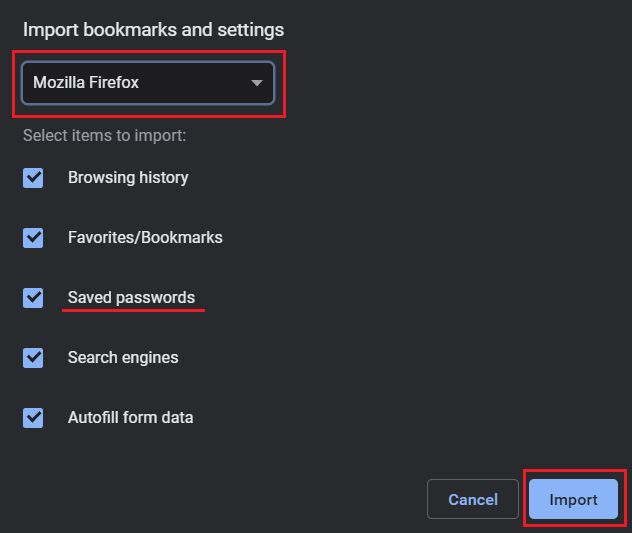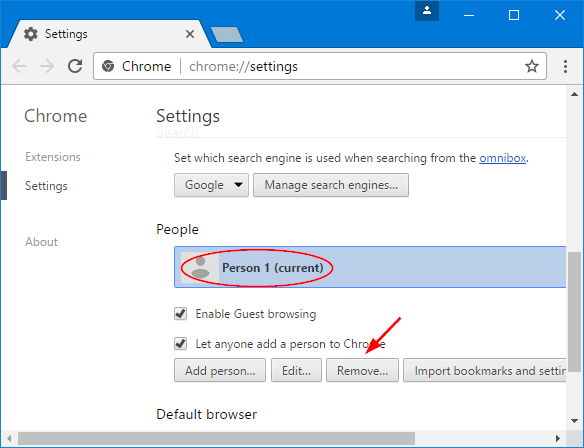

- #Export google chrome settings bookmarks saved passwords how to
- #Export google chrome settings bookmarks saved passwords password
- #Export google chrome settings bookmarks saved passwords windows
This way is generally preferred by web developers who are familiar with DevTools. If you prefer working in DevTools to Command Prompt/Terminal, you’ll like this method of unhiding the import option better.
#Export google chrome settings bookmarks saved passwords password
Enabling CSV Password Import using DevTools You can also do this via Chrome’s built-in DevTools functionality. This is the most widely used method of importing passwords into Google Chrome via CSV files when the import option isn’t found under Extras. To the right of Saved Passwords, select the three-dot icon.Then, Google Chrome will start automatically, click on the menu in top-right corner and select Settings.Once the Terminal is open, paste this command /Applications/Google\ Chrome.app/Contents/MacOS/Google\ Chrome -enable-features=PasswordImport and hit Enter.In the next window, double-click the Terminal entry.From the drop-down menu, click Utilities.Under Saved Passwords, select the three-dot icon.In the Chrome window (it launches automatically after entering the said commands), go to Settings.Next, paste this command: chrome.exe -enable-features=PasswordImport and hit Enter.Paste this command: cd “\Program Files \Google\Chrome\Application” into the console and hit Enter.Now, click on the Command Prompt entry to open it.
#Export google chrome settings bookmarks saved passwords windows
Enabling CSV in Windows Via the Command Prompt However, it’s unlikely that importing passwords into Chrome is something you’ll be doing regularly. The downside here is that you’re going to have to go through all the steps listed below whenever you wish to import passwords via CSV in Chrome. Essentially, you can force Chrome to activate its hidden password import ability using CSV. Whenever a feature is missing, whether we’re talking about Windows or macOS, a tech-savvy individual will break out the Command Prompt on Windows or the Terminal feature on Apple computers. Enabling CSV Password Import using CMD Prompt However, in some Chrome versions, you won’t be able to find the Password Import Flag in the Experiments tab in the first place.Ģ. Then, change the flag from Enabled back to Default. Turn the Password Import Flag off after importing the passwords by navigating back to the Experiments panel. Note that the entries that are similar are replaced. This method should import all the passwords from the CSV file and merge them with the existing ones in Chrome.

Next, type in “ password import” into the search bar.Now, type “ chrome://flags” in the address bar and hit Enter.
#Export google chrome settings bookmarks saved passwords how to
Here’s how to access the Experiments panel and enable Password Import Flag. This is a “hidden” Chrome option that lists the available experimental features that Google Chrome plans on releasing at some point. However, in Firefox, you need a third-party extension, which is a disadvantage.The most straightforward way to get the experimental feature up and running is using the Chrome Experiments panel. Tip: You can do the same in Mozilla Firefox. Type your password and specify the file where your passwords will be saved: This will safeguard your Chrome passwords from anyone else who has access to your unlocked PC. To secure the operation, Chrome will ask you to type your current Windows password. When you click the export button, your passwords will be saved to a *.CSV file.




 0 kommentar(er)
0 kommentar(er)
